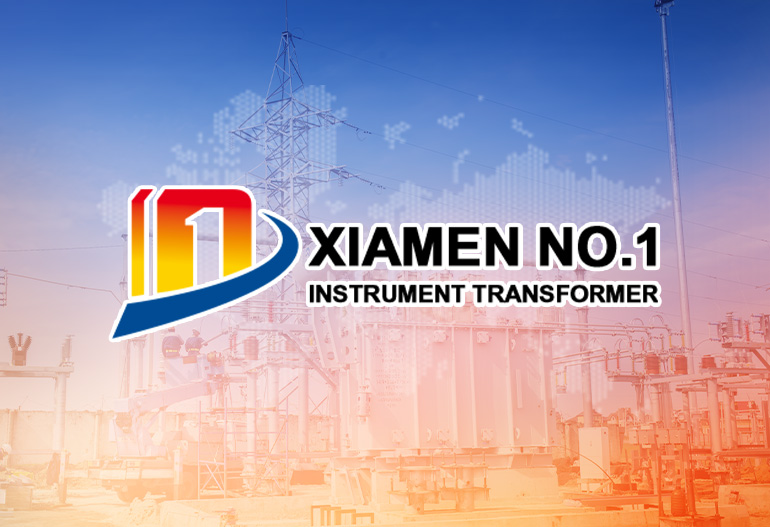Retrofitting Solar Inverters with Split Core Current Transformers for Real-Time Monitoring
Phase-specific current imbalances: Asymmetrical current distribution across three-phase inverters can indicate wiring issues, panel degradation, or inverter malfunction.
Transient current spikes: Sudden surges (e.g., due to cloud cover transitions or grid disturbances) can stress inverter components, leading to premature failure.
Low-light performance: Inverters may operate inefficiently under low irradiance, but without detailed current data, these inefficiencies go undetected.
Ground fault currents: Leakage currents to ground pose safety risks and can trigger unnecessary shutdowns if not accurately monitored.
Performance Optimization: Real-time current data allows operators to identify underperforming strings or panels, enabling targeted maintenance and maximizing energy yield.
Predictive Maintenance: Anomalies in current patterns (e.g., sudden drops or harmonics) can signal impending inverter failures, reducing unplanned downtime.
Safety Compliance: Accurate ground fault current monitoring ensures compliance with safety standards (e.g., NEC 690) and minimizes fire risks.
Grid Integration: Detailed current data supports reactive power control and frequency regulation, facilitating compliance with grid interconnection requirements.
Cost Savings: By enabling data-driven decisions, monitoring reduces operational costs associated with inefficient energy production and unscheduled repairs.
Non-Invasive Installation: The split core design eliminates the need to cut or disconnect conductors, enabling installation on live systems and reducing downtime to minutes.
Wide Current Range: Split core CTs are available in ranges from 5A to 5000A, accommodating the output currents of residential (10-50A), commercial (50-200A), and utility-scale (200-1000A+) solar inverters.
Accuracy: Modern split core CTs offer Class 0.5 or better accuracy (±0.5% at rated current), sufficient for revenue-grade metering and performance monitoring.
Output Compatibility: They typically provide analog outputs (4-20mA or 0-10V) or digital outputs (via Modbus or Ethernet), integrating seamlessly with monitoring systems.
Durability: Encased in flame-retardant materials (e.g., polycarbonate), split core CTs withstand harsh environments, including high temperatures (up to 85°C) and UV exposure in outdoor inverter enclosures.
Rogowski Coils: While flexible and non-invasive, they require external integrators for signal processing, increasing complexity and cost.
Shunt Resistors: These require series installation, necessitating conductor disconnection and posing voltage drop risks in high-current systems.
Solid Core CTs: Their rigid design makes retrofitting impractical without powering down the inverter, disrupting energy production.
A residential inverter with a 50A maximum output would use a 60-75A split core CT.
A commercial inverter with a 200A output would require a 250-300A CT.
AC Output Monitoring: Clamping CTs around the inverter’s AC output conductors (phase and neutral) measures grid-fed current, enabling energy production tracking and grid code compliance.
DC Input Monitoring: For string inverters, CTs can be installed on DC input cables to monitor current from individual PV strings, identifying underperforming panels or shading issues.
Ground Fault Monitoring: A CT wrapped around the inverter’s ground conductor detects leakage currents, triggering alarms if levels exceed safety thresholds (e.g., 30mA).
De-Energization: Whenever possible, disconnect the inverter from PV arrays and the grid before installation. For live installations, use insulated tools and personal protective equipment (PPE).
Insulation Ratings: CTs must have insulation ratings matching the inverter’s voltage (e.g., 2kV AC/DC for residential systems, 10kV for utility-scale).
Grounding: Ensure CT enclosures and signal cables are properly grounded to prevent electric shock and reduce EMI.
Analog Integration: 4-20mA signals from CTs can be connected to the inverter’s analog input ports (if available) or to a separate data logger.
Digital Integration: CTs with Modbus RTU/TCIP outputs can communicate directly with SCADA systems, cloud-based platforms (e.g., SolarEdge, Enphase), or IoT gateways.
Edge Processing: For advanced analytics, edge devices can process CT data locally, transmitting only critical insights (e.g., fault alerts) to reduce bandwidth usage.
Inverter Evaluation: Document the inverter model, maximum current rating, and existing monitoring capabilities. Identify accessible cable runs for CT installation.
Regulatory Compliance: Verify compliance with local codes (e.g., NEC 690 for PV systems, IEEE 1547 for grid interconnection) regarding CT installation and grounding.
Equipment Selection: Choose split core CTs with appropriate current ratings, output types, and environmental certifications (e.g., IP65 for outdoor use).
Safety Preparation: Prepare a lockout/tagout (LOTO) procedure if de-energization is required. Gather insulated tools, PPE, and testing equipment (e.g., multimeter).
Cable Preparation: Clean and inspect the target conductors (AC output, DC input, or ground) to ensure no damage or corrosion.
CT Mounting: Open the split core housing, clamp it around the conductor, and secure it with screws or clips. Ensure the CT is oriented correctly (current flow direction matches the manufacturer’s markings).
Wiring: Connect CT secondary leads to the monitoring device using shielded twisted-pair cables to minimize EMI. Route cables away from high-voltage conductors to avoid interference.
Grounding: Connect the CT’s ground terminal to the inverter’s equipment grounding conductor or a dedicated grounding bus.
Accuracy Verification: Use a reference meter to compare CT readings with the inverter’s built-in measurements at various load levels. Adjust calibration settings in the monitoring system if necessary.
Signal Integrity: Test for noise or signal distortion using an oscilloscope, especially in environments with high EMI (e.g., near transformers or variable frequency drives).
Fault Simulation: Inject test currents (if safely possible) to verify that the system triggers alarms for overcurrent, imbalance, or ground faults.
System Configuration: Program the monitoring platform to log CT data at appropriate intervals (e.g., 1-minute samples for performance analysis, 10-millisecond samples for fault detection).
Data Validation: Cross-check CT-derived data with inverter telemetry (e.g., energy production, voltage) to ensure consistency.
User Training: Train operators to interpret real-time current data, recognize anomalies, and respond to alerts.
Cost-Effectiveness: Retrofitting with split core CTs (
500 per inverter) is far cheaper than replacing legacy inverters with new models (100−10,000 per unit).2,000−
Minimal Downtime: Non-invasive installation reduces downtime to 1-2 hours per inverter, compared to 8+ hours for inverter replacement.
Scalability: CTs can be added incrementally, allowing operators to prioritize critical inverters or phases.
Data Granularity: Real-time current data enables insights into system behavior that were previously inaccessible, driving targeted efficiency gains.
Safety Enhancement: Ground fault monitoring reduces fire risks and ensures compliance with evolving safety standards.
EMI Interference: High-frequency noise from inverters can distort CT signals. Mitigations include using shielded cables, twisted-pair wiring, and ferrite cores on signal lines.
CT Saturation: Overcurrent events (e.g., during grid faults) can saturate CTs, leading to measurement errors. Selecting CTs with a 30% oversaturation margin and using anti-saturation circuitry in monitoring devices addresses this.
Environmental Degradation: Outdoor CTs may degrade due to UV exposure or moisture. Choosing IP67-rated enclosures and UV-stabilized materials extends lifespan.
System Compatibility: Older inverters may lack analog/digital inputs for CT integration. Adding a standalone data logger with wireless connectivity (e.g., LoRaWAN, cellular) resolves this issue.
Calibration Drift: Over time, CTs may drift from their accuracy ratings. Scheduling annual calibration checks ensures long-term measurement reliability.



